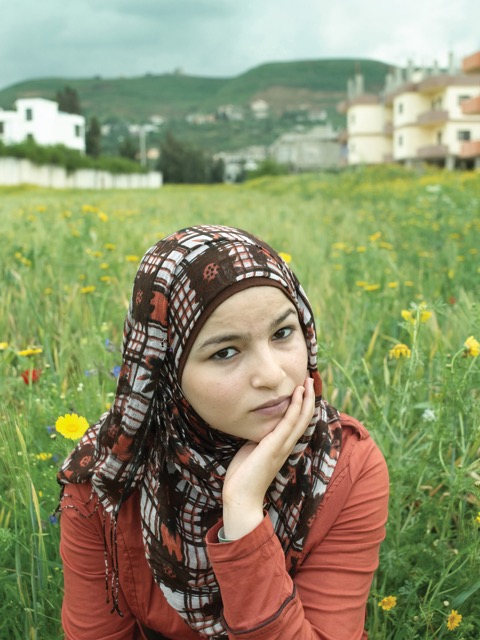“I miss everything. I miss my friends so much. I miss the street. I miss my teachers; my school,” says Hany Al Moulia. “I miss my coffee with the birds.”
Al Moulia is one of 15 teenage Syrian refugees featured in photojournalist Elena Dorfman’s 2013 portrait series Syria’s Lost Generation, currently on view at the Mills College Art Museum. In Dorfman’s photograph, the then–19-year-old sits in a tent in the camp where he lived at the time in Madjel Anjar, Lebanon. With his limbs angled slightly, as if subtly bracing himself, he peers pensively ahead.
“I’m a writer and I promised myself that I will not write anything here,” Al Moulia tells Dorfman in the accompanying audio interview. “I don’t want to have any feelings or any emotions here.”

But Dorfman’s portraits capture the human vulnerability beneath the resilient exteriors of her young Syrian subjects. In 2013, Dorfman spent six months traveling around Lebanon, Egypt, Jordan and Turkey photographing Syrian refugees for the United Nations High Commissioner for Refugees. She received the assignment because she has a unique set of skills.
After starting her career as a journalist for the San Francisco Chronicle, Dorfman moved into photojournalism and eventually spent the majority of her career taking portraits for major magazines. She’s photographed in conflict zones abroad, as well as taken portraits of David Lynch and Kirk Douglas. When the U.N. reached out to her, she said, they invited her to shed new light on the effects of the conflict in Syria by telling a different story than the one that shots of war-torn landscapes do — a story focused on characters. Although Dorfman had already settled into a new professional phase in fine art photography, and was about to release a book, she decided to drop what she was doing to see what perspectives she could amplify abroad.

She returned with Syria’s Lost Generation. The series was originally published in the New Yorker in 2013, and has since exhibited all over the United States. It features refugees between the ages of 14 and 22, some still with their families, others without; some living in apartments and others in makeshift camps or converted old buildings without amenities. But Dorfman’s photos focus more on soul than setting. Many of the young adults in her portraits appear to be languishing in a bereft state of placelessness — old enough to understand what is happening, but too young to be busied with the responsibility of making a new life for their families.





